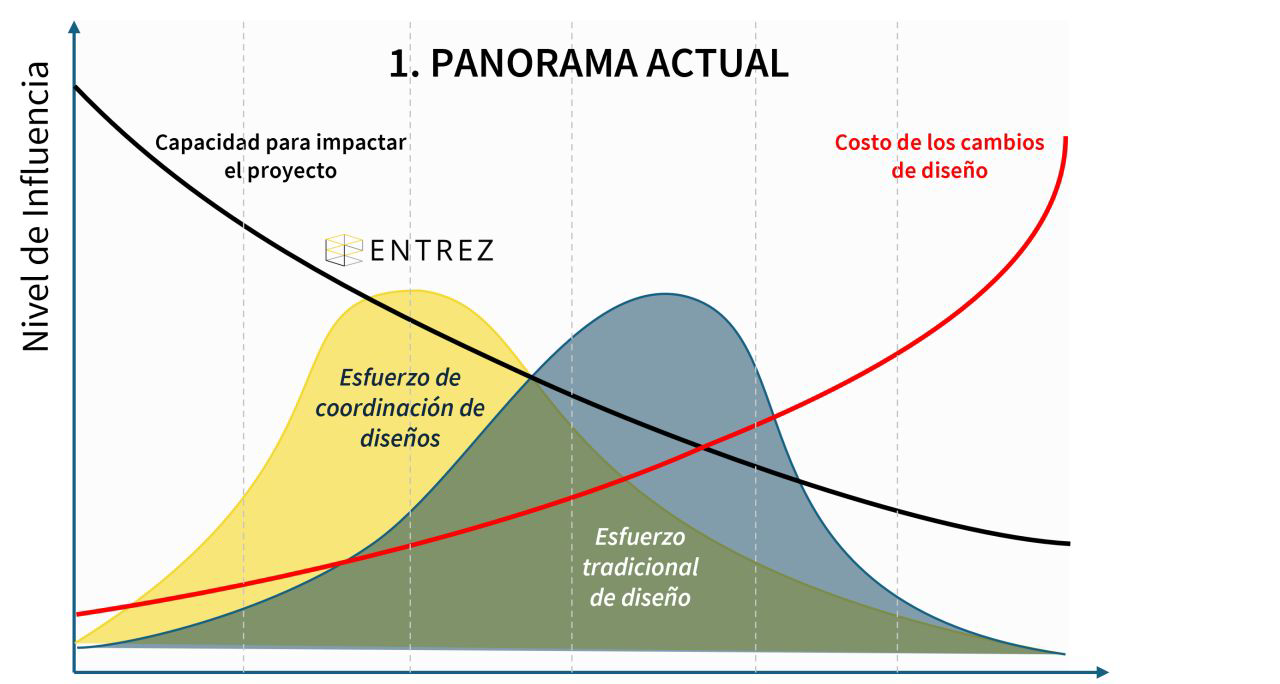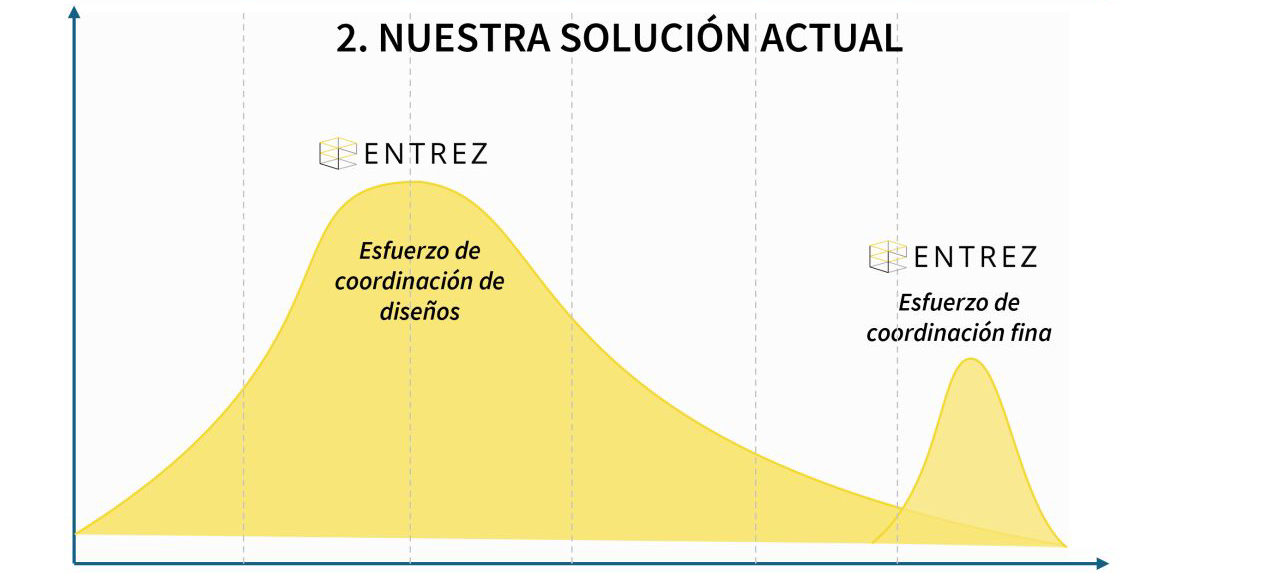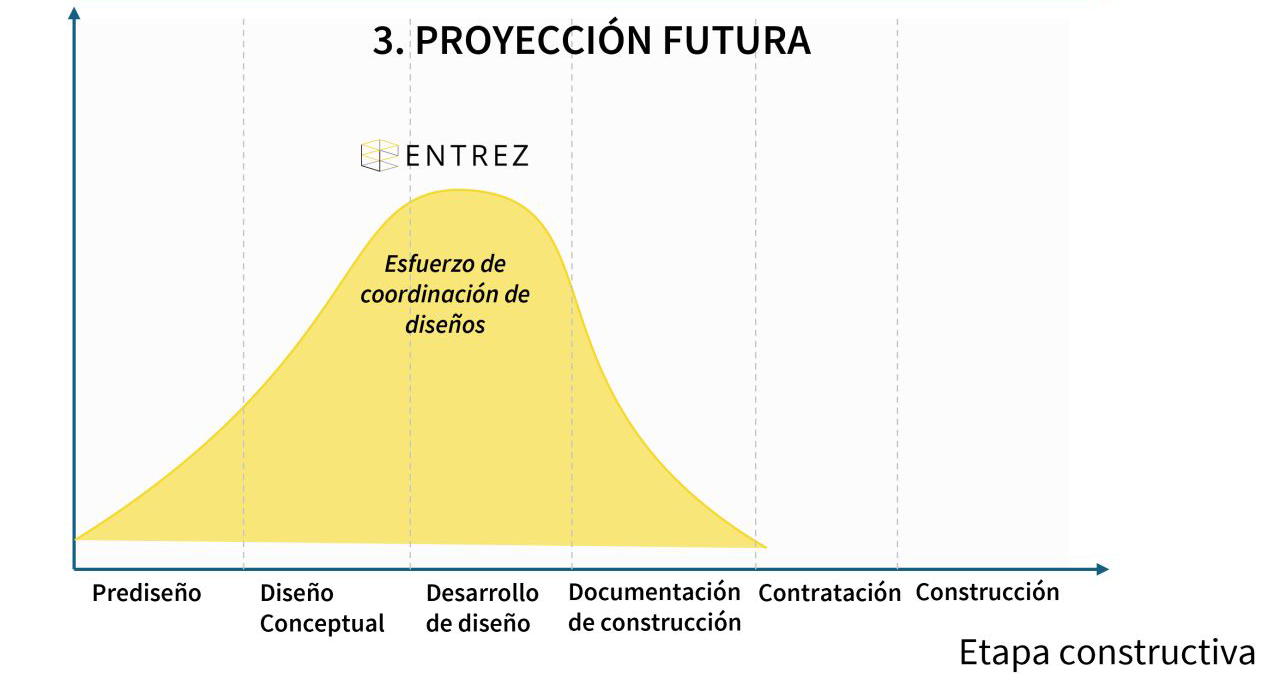Design Coordination vs. Detailed Coordination: Keys to Success in Construction
Let’s delve into a crucial topic: the difference between design coordination and detailed (or fine) coordination during construction.
Design coordination, carried out during the design and preconstruction stages, primarily involves designers and modelers working together to coordinate structural elements, vertical shafts, façades, technical rooms, and main MEP routes, among others. Too often, this effort is postponed until just before construction begins—or even occurs simultaneously with construction—which is a costly mistake. Digital construction enables early collaboration and helps shift design efforts toward the initial stages of the project (see 1. CURRENT LANDSCAPE)

On the other hand, detailed coordination is essential during the construction phase, with the active participation of contractors and subcontractors. This stage focuses on refining aspects like construction logistics and precise installation details (see 2. OUR CURRENT SOLUTION)

Often, designers must be consulted again to approve the optimizations suggested. However, detailed coordination is frequently undervalued, leading to improvisation, rework, strained labor relations, and losses in productivity and profit.
These differences between design coordination and detailed coordination will gradually blur in the AEC industry as we move toward prefabrication, modular construction, and 3D printing, paving the way for fully digitalized construction (see 3. FUTURE OUTLOOK).

In such a future, post-digital construction efforts will no longer be necessary, as projects will be conceived with a holistic and harmonious design approach from the start. Until then, both types of coordination remain essential to the commercial and financial success of any construction project.
💡🚀 We’re here to support your current projects and help you transition into the future of construction!